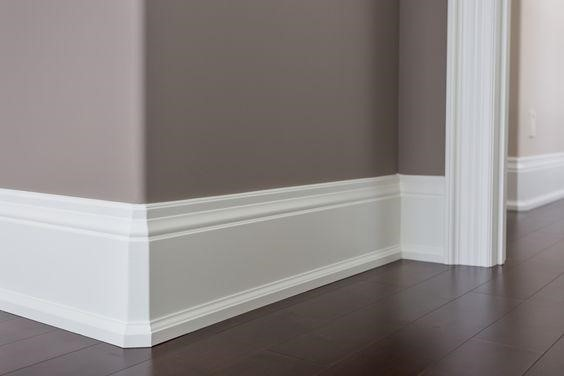The skirting boards make your space appear larger than it is by drawing attention to the floor and up the wall, creating a smooth transition between the two.
Typically, skirtings are the tiles or boards that run along the wall’s edge between the floor and the wall. Its primary purposes include covering the uneven edge, protecting the internal wall from damage, guarding against abrasion, and many more. The skirting boards make your space appear larger than it is by drawing attention to the floor and up the wall, creating a smooth transition between the two.
Why not think outside the box when installing the floor skirting and creating an intriguing visual element? This skirting will enhance the overall decor of the house with tonnes of style and personality in addition to fantastic looks.
1. Metal skirting
Metal skirting is made of stainless steel. Use SS (stainless steel) for the floor skirting to make a strong statement. The SS skirting gives the house a bright, rich, and upscale modern appearance. The fact that stainless steel skirting is prone to scratches is one of its main drawbacks.
2. Wooden skirting
When a wooden skirting is installed beside granite, wooden, marble, or tile flooring, it adds a sense of cosiness, opulence, and sophistication. Light-coloured flooring, walls, and ceilings make it function best. Traditional interiors use wooden skirting.
The market offers wooden skirting in a variety of sizes and styles. Moreover, it comes in a range of hues and patterns. Instead of choosing contrasting colors for small rooms, simply match the skirting’s colour to the wall. This small touch will create a smooth appearance and increase the feeling of spaciousness.
3. Coloured skirting
This room’s skirting board has been painted bright yellow to give it a fun appearance. This look can be accomplished by installing skirting made of dense-grade MDF (medium-density fiberboard) boards and painting it a vibrant colour of your choice. MDF is more affordable and less expensive than timber skirting.
4. MDF skirting
Compressed fibers are used to create MDF skirting. This skirting is available in a wide range of varieties. Pre-primed and pre-finished MDF skirting are the two primary varieties. If you wish to eventually colour and design your boards per your preference, pre-primed is great. Its price is reasonable, and its durability is sufficient. While skirting for the interior of your home, MDF is a great option if you want a traditional white aesthetic.
5. Bullnose skirting
Bullnose skirting gives the house a sleek, contemporary appearance. Bullnose skirting boards come in a variety of conventional heights, ranging from 50mm to 300mm. The primary benefit of bullnose skirting is that it requires little care and is simple to clean. It complements any interior design style.
6. Flush skirting
The flat skirting board gives the house a seamless appearance. The skirting tile is mounted so that the plaster and tile are flush with each other at the same floor level. The greatest benefit of this style of skirting is that, unlike skirting tiles that extend outward from the wall, it does not collect dust because it is flush with the wall. These skirting styles free up space for the floor and allow you to place the furniture so that it perfectly fits the wall.
7. Double-layered skirting
Double-layered skirting is also known as two-toned skirting. These skirting board varieties contribute to the room’s intricate style. This skirting will be perfect for that extra protection.
8. Marble skirting
The floor is more distinguishable when there is a skirting made of marble stone or tile in a contrasting colour. The skirting should be in a different colour than the floor. See how the darker marble is used as the skirting in this flooring pattern; the effect is to give the impression that the flooring design is being extended vertically.
Post time: Apr-28-2023









